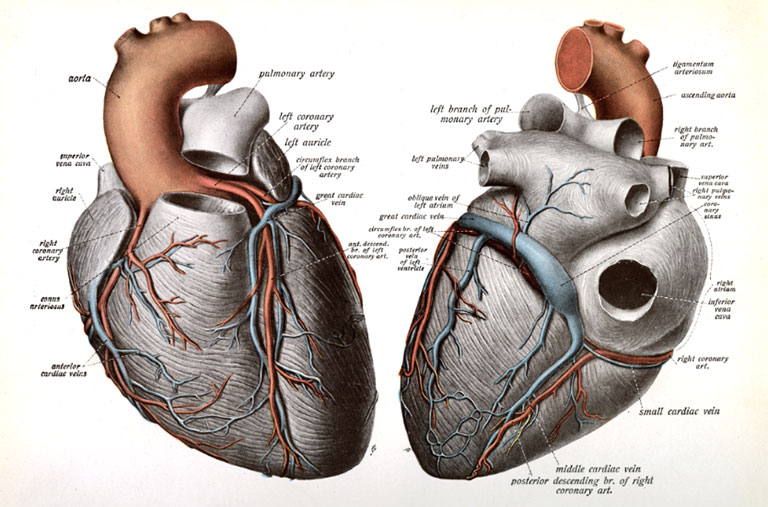Drawing Blood: Anatomical Depictions of the Heart
The exhibit runs until February 28, 2023.

February is American Heart Month. To honor this most central organ, the HSHSL has installed an exhibit in the Weise Gallery highlighting four centuries of anatomical drawings of the heart from the Historical Collections.
The understanding of the heart can be traced back to 3500 B.C. with the ancient Egyptians. For millennia the beliefs around the heart circled around religion and spirituality rather than science. This changed around 460 B.C. with Hippocrates and the first heart anatomy text, “On the Heart.” In 300 B.C. human dissection began to be acceptable and anatomists could thus learn more about the anatomy of the body.
Leonardo Da Vinci in the 16th Century is often credited with the first anatomical drawing of the heart. Many of his sketches and writings about the organ remain true today – over 500 years later. Da Vinci, while not the first to claim the heart as a muscle, cemented the concept. He was the first to describe the four chambers of the heart with two ventricles and two atria. In the seventeenth century, William Harvey was the first to describe the circulation system.
Major advances were made in the understanding of the heart’s function and anatomy during the eighteenth, nineteenth and twentieth centuries. Anatomists began to better understand the function of the heart and the circulatory system as a whole. These scientists laid the foundation of today’s understanding of the heart.
The exhibit in the Weise Gallery provides a visual backdrop for changes in the understanding of the functions and anatomy of the heart outlined in this brief history. The exhibit highlights anatomists from six countries and volumes dating from 1641 to 1954. The prints are both artistically stunning and influential in medicine and science.